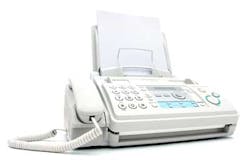Pharmacology update: Reclassification and guidelines for controlled medications
This article first appeared in the newsletter, DE's Breakthrough Clinical with Stacey Simmons, DDS. Subscribe here.
So many changes have occurred in drug reclassification over the past year that the basic rules governing the prescription of controlled medications and the changes are not as simple as they should be. I want to give you a few of the highlights to help cut through some of the confusion. Huge disclaimer time: The following lists are DEA allowed, but you will need to check your state and local laws.
First off, a few medications have changed classification from legend prescription medication to controlled medication status. These medications specifically are Soma/carispodol and Ultram/tramadol. These medications are now rated as C-IV. So what does that mean to you as a prescriber? These drugs will now follow tighter prescribing rules. Here are some of the highlights of common questions about prescribing controlled medications (C-III through C-IV).
This class of medication may be phoned or faxed in. If you choose to phone or fax these medications to the pharmacy, please do not give the patient a hard copy. Essentially you would be dispensing two prescriptions—one that the patient could take to any pharmacy and the other is waiting for him or her to pick up right where you called it in.
If you prefer to give the patient a hard copy (a handwritten prescription), it must be written on tamper-proof paper. Most offices have gone to a computer-generated script. These are great as they cut down on sloppy handwriting, but remember, electronic signatures are not enough when the hard copy is given to the patient. All prescriptions handed to the patient must have a "wet" signature on them, so even if you have the electronic, computer-generated signature on the hard copy, grab a pen and sign it again. Silly? A little bit, but try convincing the DEA of that.
The next big change is the reclassification of all hydrocodone medications. All medications that contain hydrocodone are now classified as C-II. What does this mean? Now all hydrocodone scripts will have to have a written hard copy handed to the patient. Phoning in and faxing in a copy of the medication is not allowed with this class of medication. You are allowed to e-scribe C-II medications if both ends of the e-scribe system you use have been validated; i.e., the DEA approves the prescriber’s end and the pharmacy’s end to ensure they are safe and secure from tampering. I hate to utter this phrase, but check with your software vendor.
ADDITIONAL READING |Thoughtful use of local delivery antimicrobial agents in periodontitis
Remember, these rules are in place to help prevent diversion and abuse issues. Another important tool we have is the prescription drug registry. Drug registries are an underused tool in most states for countless reasons, but they are incredibly useful and eye-opening. These registries have different names in different states but the concept is the same. Check in on patients who raise a flag of possible doctor shopping or abuse issues. It is easier said than done, but here is a list of some behaviors to watch for:
- Excessive mood swings
- Increase or decrease in sleep
- Poor decision-making
- Appearing to be high, unusually energetic or revved up, or sedated
- Continually "losing" prescriptions, so more prescriptions must be written
- Seeking prescriptions from more than one doctor. A little-known fact is, yes, doctor shopping really is illegal in most states and, yes, it should be reported. Duh, right?
A quick summary of prescription drug abuse
The most commonly abused prescription drugs fall into three categories. The first is opioids, and as I'm sure you know, these are your painkillers such as hydrocodone, oxycodone, morphine, etc. It is estimated that 5.1 million Americans abuse this class of medication. The main goal of the abuser is euphoria, but the potential side effects range from drowsiness and sedation all the way to lowered or arrested breathing, unconsciousness, coma, and death.
The next class of abused prescription medications is depressants. A mere 2.6 million Americans abuse this class of medication. To put that in perspective, that is about the population of Chicago. This class includes benzodiazepines (benzos) such as Xanax/alprazolam, Valium/diazepam, and Ativan/lorazepam. The desired effects when abusing this class of medication are reduced anxiety, lowered inhibitions, and feelings of well-being. Some of the potential side effects are slurred speech, impaired concentration and coordination, and respiratory distress.
The last category is stimulant medications, with an estimated 1.1 million Americans abusing these meds. This category includes Adderall/D-amphetamine salt combo and Ritalin/methylphenidate. The abuser hopes to increase energy, mental alertness, and feelings of exhilaration. The downside is stimulants can cause increased heart rate, weight loss, insomnia, seizures, heart attack, and stroke.
ADDITIONAL READING |Atypically prolonged pain after dentoalveolar surgery: A study of tricyclic antidepressants
Now I'm sure that when you were aspiring to become a health-care professional, the thought of playing cop never crossed your mind. Unfortunately it is a part of all of our jobs. Taking care of a patient’s prescription needs in a legal and ethical way takes good judgment and loads of experience. Keeping a vigilant eye and having good prescribing habits can go a long way in preventing prescription drug abuse.
This article first appeared in the newsletter, DE's Breakthrough Clinical with Stacey Simmons, DDS. Subscribe here.










